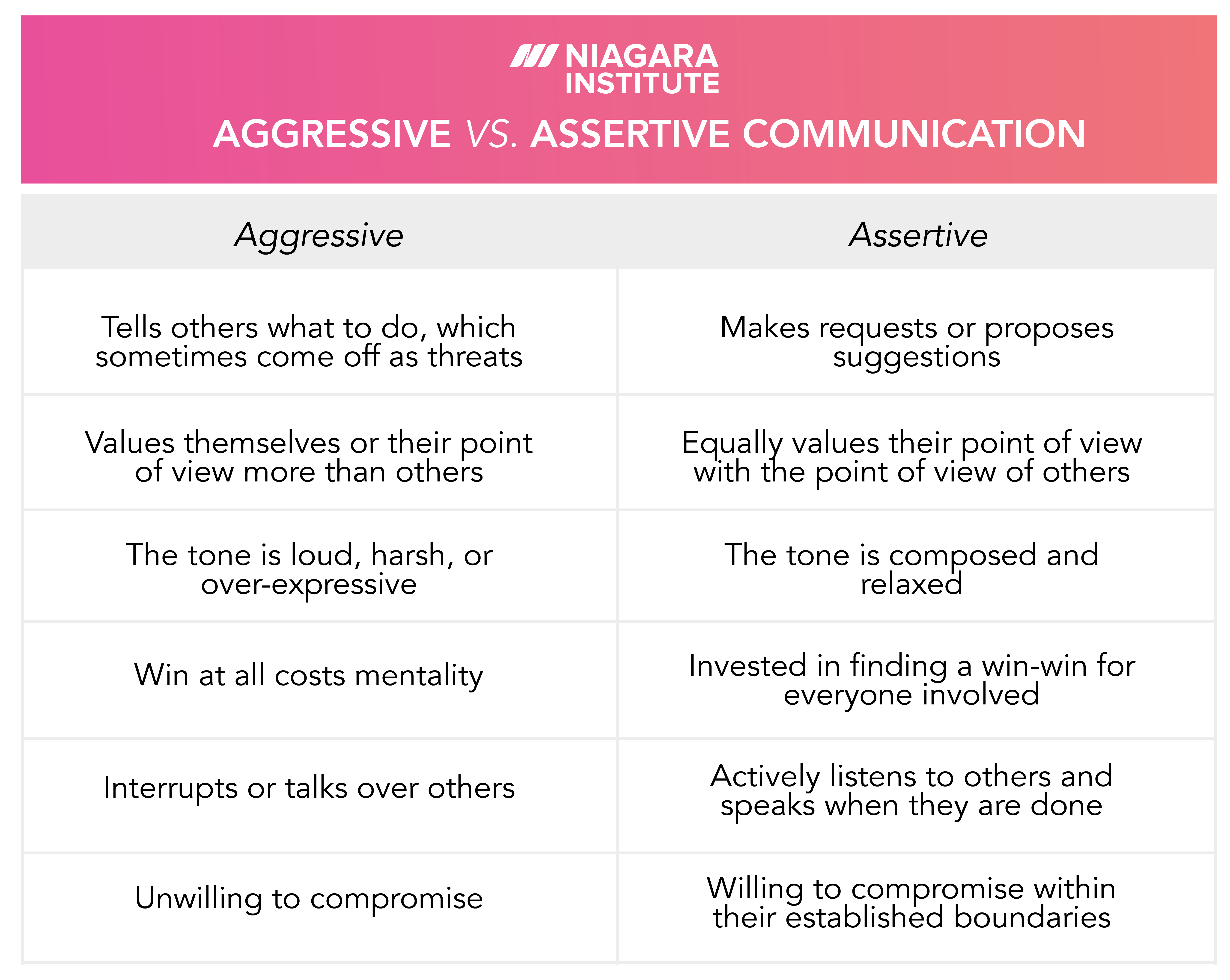4 min read
How To Spot Different Communication Styles in the Workplace
No one uses a singular communication style in the workplace. Everything from the topic of the conversation to the person you are speaking with’s tone...
2 min read
 Michelle Bennett
:
Oct 7, 2021 5:29:00 AM
Michelle Bennett
:
Oct 7, 2021 5:29:00 AM

The assertive communication style is typically seen as the communication style to strive for. It can help you establish relationships, build trust, minimize conflict, manage expectations, and protect your boundaries when done effectively.
Unfortunately, assertiveness can get misinterpreted as aggressive communication - especially for women in business. According to research, women receive “negative personality criticism,” such as being called bossy or told to “watch their tone” in around 75% of performance reviews. They also receive 2.5 times the amount of feedback men do about aggressive communication styles, with phrases such as “your speaking style is off-putting” and are described as being “abrasive” far more often than men.
This begs the question, what exactly are the differences between aggressive and assertive communication, and how do you limit the chances of being misinterpreted? In the following article, we’ll dive into these two communication styles and provide you with a few practical action items to help you become an effective communicator.
According to UCLA’s Counseling and Psychological Services department, aggressive communication can be defined as “expressing one's own feelings, needs, and desires while ignoring others’ rights or boundaries. It can involve blaming others, intimidating, criticizing, threatening, or attacking.”
Aggressive Communication Examples
In our global survey on workplace communication, it was found that an aggressive communication style was the least likely used by professionals, with only 4.6% naturally gravitating towards this style.
Assertive communication, on the other hand, is defined as “being politely direct, honest and communicating our thoughts and feelings as they are. There is respect for others’ needs and rights while we also assert our own.”
This communication style is often considered the one to strive for and has been found to lead to reduced anxiety, higher self-esteem and confidence, a greater sense of agency, and better relationships. Luckily, 75.3% of professionals surveyed use this style of communication at work.
Assertive Communication Examples
To make the difference between aggressive and assertive communication much clearer, the following chart outlines some typical behaviors that are characteristic of each communication style.

Now that we have identified the key differences between the aggressive and assertive communication styles, here are a few practical tips that can be applied to help make your communication more assertive, and ultimately, effective.
Communicating assertively in the workplace is ideal to ensure those around you feel included, heard, and respected while also ensuring your needs are met, and boundaries are protected. If you are eager to develop the communication skills that are necessary to adopt an assertive communication style, then you might consider taking a program such as Speaking as a Leader, which will give you the competence and confidence to speak with clarity, conviction, and influence.

4 min read
No one uses a singular communication style in the workplace. Everything from the topic of the conversation to the person you are speaking with’s tone...

5 min read
How much time do you spend every single day at work communicating with others? For a lot of people, the answer is the majority of their day. Between...

4 min read
Collaborating with coworkers, resolving conflicts, leading meetings, working with customers, passing on information, or building healthy working...